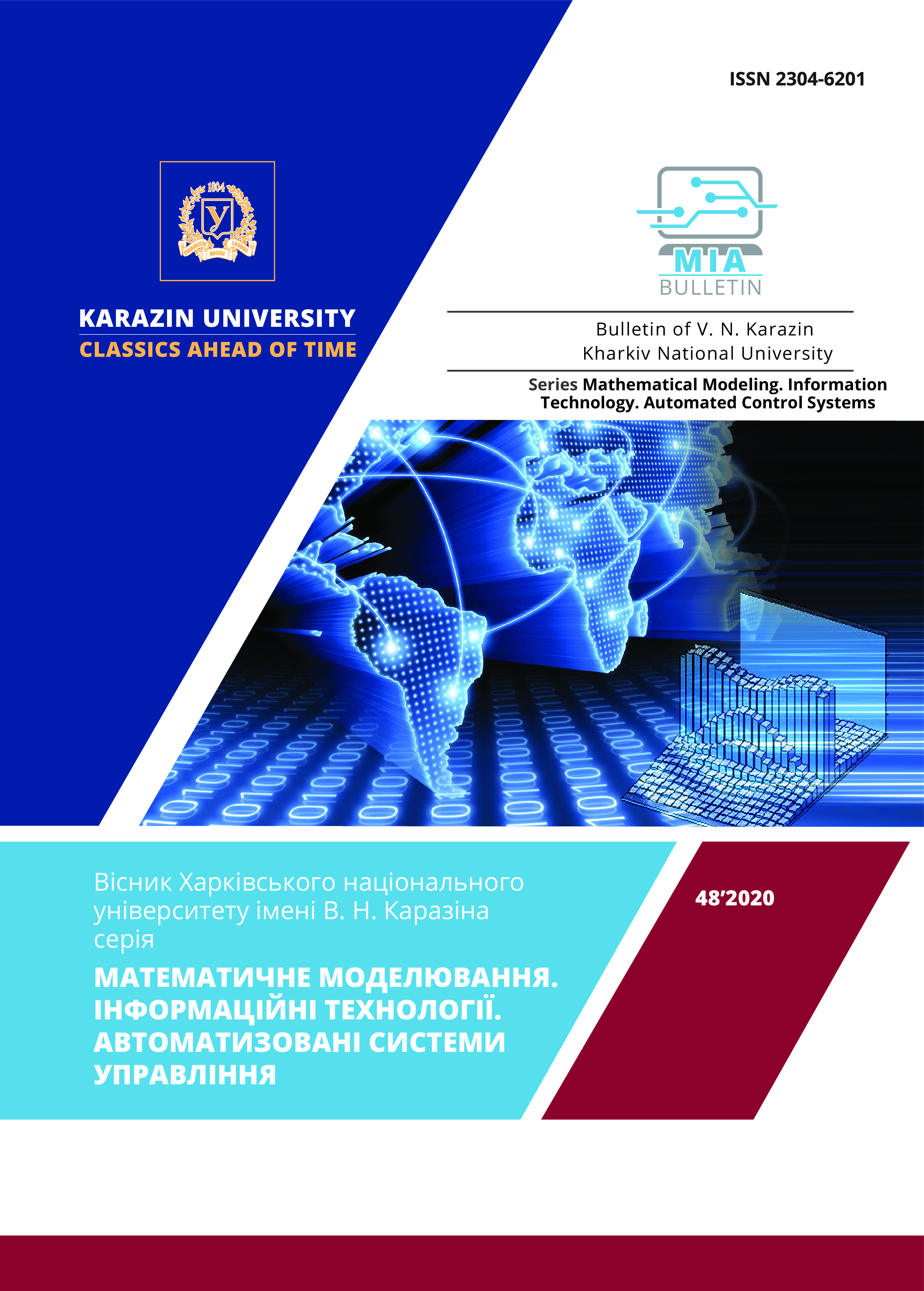Математичне моделювання динаміки пандемії COVID-19
Анотація
Приведений детальний огляд математичних моделей, які представлені системами ЗДР і використовуються для вивчення взаємозв’язаних шляхів і механізмів поширення інфекційних захворювань, зокрема SIRS і SEІRS моделей та їх модифікацій. Окремо досліджується узагальнена SEІRS-модель, яка містить шість параметрів і враховує сниження доступності та якості лікування зі зростанням числа хворих. Проведені дослідження асимптотичної стійкості стаціонарного розв’язку системи та аналітични оцінки базової швидкості поширення інфекції R0. Показано, що в залежності від параметрів моделі можлива біфуркація поведінки динамічної системи. Проведені чисельні розрахунки за моделлю з використанням даних для ряду країн Європи, включаючи Україну. Показано, что параметр стійкості системи ЗДР відповідає кількості випадків вторинного зараження, яку розраховують шляхом аналізу клінічних даних.
Завантаження
Посилання
/Посилання
J.T. Wu, K. Leung, G.M. Leung, “Nowcasting and forecasting the potential domestic and international spread of the 2019-nCoV outbreak originating inWuhan, China: a modelling study”. The Lancet, 2020, Vol. 395, (10225), P. 689–697 https://doi.org/10.1016/S0140-6736(20)30260-9
K.J. Friston, T. Parr, P. Zeidman, et al. “Testing and tracking in the UK: A dynamic causal modelling study”. Wellcome Open Res., 2020, Vol.5, P.144 https://wellcomeopenresearch.org/articles/5-144
G. Giordano, F. Blanchini, R. Bruno, et al. “Modelling the COVID-19 epidemic and implementation of population-wide interventions in Italy”. Nature Medicine, 2020, Vol.26, P. 855–860 https://doi.org/10.1038/s41591-020-0883-7
D. Aldila, S.H.A. Khoshnaw, E. Safitri, et al., “A mathematical study on the spread of COVID-19 considering social distancing and rapid assessment: The case of Jakarta, Indonesia”. Chaos, Solitons and Fractals, 2020, 139, 110042 https://doi.org/10.1016/j.chaos.2020.110042
N. Bacaër, A. Short, History of Mathematical Population Dynamics. Springer-Verlag, London, 2011, 162 р. https://doi.org/10.1007/978-0-85729-115-8
Wang Z., Bauchc Ch.T., Bhattacharyya S., et al. Statistical physics of vaccination. Physics Reports. 2016. Vol.664. P.1-113. http://dx.doi.org/10.1016/j.physrep.2016.10.006
G.I. Marchuk Mathematical modeling in immunology, Nauka, Moscow, 1985, 239 p. (in Russian) http://prometeus.nsc.ru/science/schools/marchuk/biblio/cont1985.ssi
S. Samanta, V.K. Dubey, B. Sarkar, “Measure of influences in social networks”. Applied Soft Computing Journal, 2020 (in press) https://doi.org/10.1016/j.asoc.2020.106858
C.A. Varotsos, V.F. Krapivin, “A new model for the spread of COVID-19 and the improvement of safety”. Safety Science, 2020, Vol.132 (104962) https://doi.org/10.1016/j.ssci.2020.104962
Wu J.T., Leung K., Leung G.M. Nowcasting and forecasting the potential domestic and international spread of the 2019-nCoV outbreak originating inWuhan, China: a modelling study. The Lancet. 2020. Vol. 395(10225), P. 689–697. https://doi.org/10.1016/S0140-6736(20)30260-9
Friston K.J., Parr T., Zeidman P., et al. Testing and tracking in the UK: A dynamic causal modelling study. Wellcome Open Res. 2020. Vol.5. P.144. https://wellcomeopenresearch.org/articles/5-144
Giordano G., Blanchini F., Bruno R., et al. Modelling the COVID-19 epidemic and implementation of population-wide interventions in Italy. Nature Medicine. 2020. Vol.26, P. 855–860. https://doi.org/10.1038/s41591-020-0883-7
Aldila D., Khoshnaw S.H.A., Safitri E., et al. A mathematical study on the spread of COVID-19 considering social distancing and rapid assessment: The case of Jakarta, Indonesia. Chaos, Solitons and Fractals. 2020. 139. 110042 https://doi.org/10.1016/j.chaos.2020.110042
Bacaër N., Short A. History of Mathematical Population Dynamics. Springer-Verlag, London. 2011. 162 р. https://doi.org/10.1007/978-0-85729-115-8
Wang Z., Bauchc Ch.T., Bhattacharyya S., et al. Statistical physics of vaccination. Physics Reports. 2016. Vol.664. P.1-113. http://dx.doi.org/10.1016/j.physrep.2016.10.006
Марчук Г.И. Математические модели в иммунологии. М.: Наука, 1985. 239 с. http://prometeus.nsc.ru/science/schools/marchuk/biblio/cont1985.ssi
Samanta S., Dubey V.K., Sarkar B. Measure of influences in social networks. Applied Soft Computing Journal. 2020. (in press) https://doi.org/10.1016/j.asoc.2020.106858
Varotsos C.A., Krapivin V.F. A new model for the spread of COVID-19 and the improvement of safety. Safety Science. 2020. Vol.132 (104962). https://doi.org/10.1016/j.ssci.2020.104962




